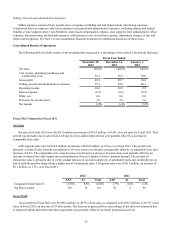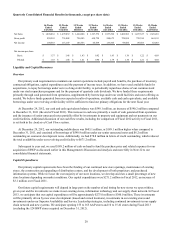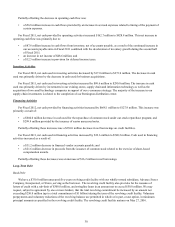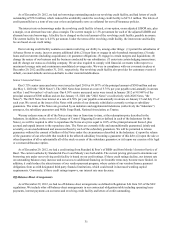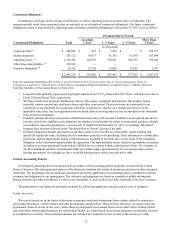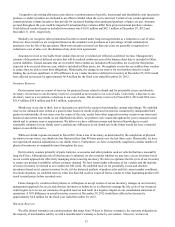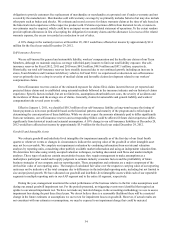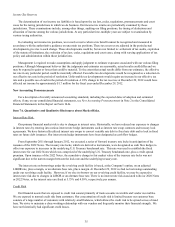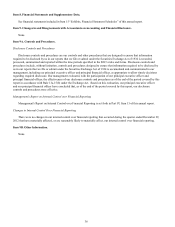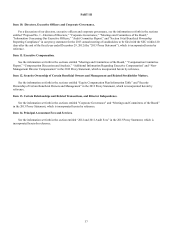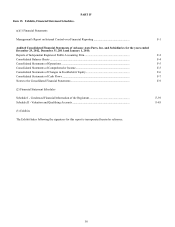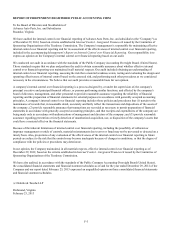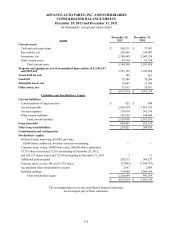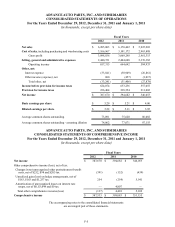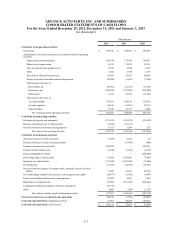Advance Auto Parts 2012 Annual Report Download - page 42
Download and view the complete annual report
Please find page 42 of the 2012 Advance Auto Parts annual report below. You can navigate through the pages in the report by either clicking on the pages listed below, or by using the keyword search tool below to find specific information within the annual report.
35
Income Tax Reserves
The determination of our income tax liabilities is based upon the tax law, codes, regulations, pronouncements and court
cases for the taxing jurisdictions in which we do business. Our income tax returns are periodically examined by those
jurisdictions. These examinations include, among other things, auditing our filing positions, the timing of deductions and
allocation of income among the various jurisdictions. At any particular time, multiple years are subject to examination by
various taxing authorities.
In evaluating our income tax positions, we record a reserve when a tax benefit cannot be recognized and measured in
accordance with the authoritative guidance on uncertain tax positions. These tax reserves are adjusted in the period actual
developments give rise to such change. Those developments could be, but are not limited to: settlement of tax audits, expiration
of the statute of limitations, the evolution of tax law, codes, regulations and court cases, along with varying applications of tax
policy and administration within those jurisdictions.
Management is required to make assumptions and apply judgment to estimate exposures associated with our various filing
positions. Although Management believes that the judgments and estimates are reasonable, actual results could differ and we
may be exposed to gains or losses that could be material. To the extent that actual results differ from our estimates, the effective
tax rate in any particular period could be materially affected. Favorable tax developments would be recognized as a reduction in
our effective tax rate in the period of resolution. Unfavorable tax developments would require an increase in our effective tax
rate and a possible use of cash in the period of resolution. A 10% change in the tax reserves at December 29, 2012 would have
affected net income by approximately $1.7 million for the fiscal year ended December 29, 2012.
New Accounting Pronouncements
For a description of recently announced accounting standards, including the expected dates of adoption and estimated
effects, if any, on our consolidated financial statements, see New Accounting Pronouncements in Note 2 to the Consolidated
Financial Statements in this Report on Form 10-K.
Item 7A. Quantitative and Qualitative Disclosures about Market Risks.
Interest Rate Risk
Our primary financial market risk is due to changes in interest rates. Historically, we have reduced our exposure to changes
in interest rates by entering into various interest rate hedge instruments such as interest rate swap contracts and treasury lock
agreements. We have historically utilized interest rate swaps to convert variable rate debt to fixed rate debt and to lock in fixed
rates on future debt issuances. Our interest rate hedge instruments have been designated as cash flow hedges.
From September 2011 through January 2012, we executed a series of forward treasury rate locks in anticipation of the
issuance of the 2022 Notes. The treasury rate locks, which are derivative instruments, were designated as cash flow hedges to
offset our exposure to increases in the underlying U.S. Treasury benchmark rate. This rate was used to establish the fixed
interest rate for our 2022 Notes which was comprised of the underlying U.S. Treasury benchmark rate, plus a credit spread
premium. Upon issuance of the 2022 Notes, the cumulative change in fair market value of the treasury rate locks was not
significant due to the narrow margin between the lock rate and the underlying treasury rate.
The interest rate on borrowings under the revolving credit facility is based, at the Company’s option, on an adjusted
LIBOR rate, plus a margin, or an alternate base rate, plus a margin. At December 29, 2012 we had no borrowings outstanding
under our revolving credit facility. However, if we elect to borrow on our revolving credit facility, we may be exposed to
interest rate risk due to changes in LIBOR or an alternate base rate. There is no interest rate risk associated with our 2020 Notes
or 2022 Notes, as the interest rates are fixed at 5.75% and 4.50%, respectively, per annum.
Credit Risk
Our financial assets that are exposed to credit risk consist primarily of trade accounts receivable and vendor receivables.
We are exposed to normal credit risk from customers. Our concentration of credit risk is limited because our customer base
consists of a large number of customers with relatively small balances, which allows the credit risk to be spread across a broad
base. We strive to maintain a close working relationship with our vendors and frequently monitor their financial strength. We
have not historically had significant credit losses.


